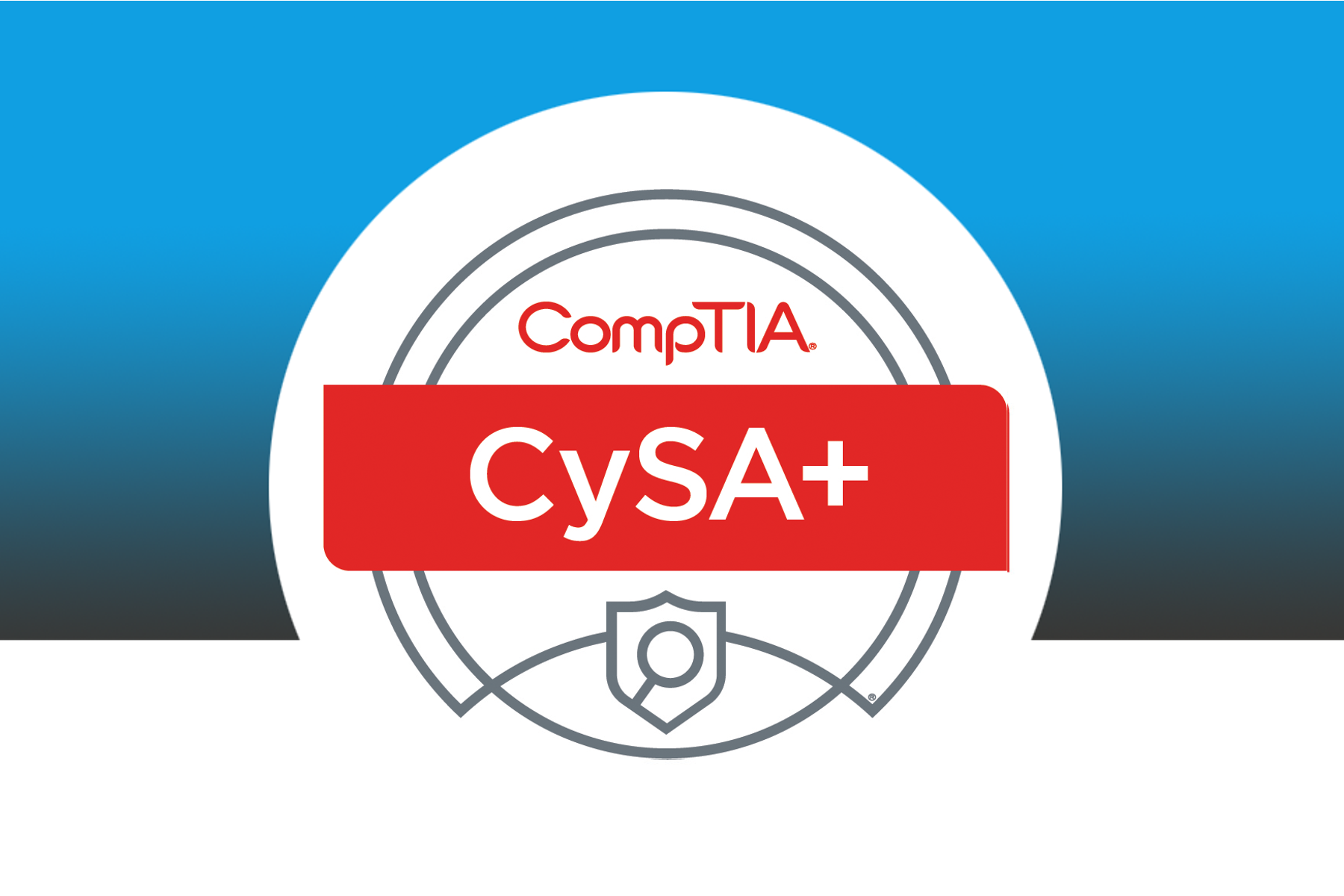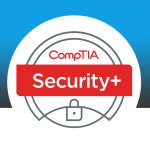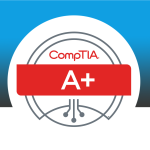Overview
The CompTIA CySA+ exam is an internationally targeted validation of intermediate-level security skills and knowledge. While there is no required prerequisite, the CompTIA CySA+ certification is intended to follow CompTIA Security+ or equivalent experience and has a technical, “hands-on” focus on IT security analytics. The CompTIA CySA+ examination is designed for IT security analysts, vulnerability analysts, or threat intelligence analysts. The exam will certify that the successful candidate has the knowledge and skills required to configure and use threat detection tools, perform data analysis and interpret the results to identify vulnerabilities, threats, and risks to an organization with the end goal of securing and protecting applications and systems within an organization.
Benefits
- Apply environmental reconnaissance techniques using appropriate tools and processes.
- Analyze the results of a network reconnaissance.
- Given a network-based threat, implement or recommend the appropriate response and countermeasure.
- Explain the purpose of practices used to secure a corporate environment.
- Implement an information security vulnerability management process.
- Analyze the output resulting from a vulnerability scan.
- Compare and contrast common vulnerabilities found in the various targets within an organization.
- Distinguish threat data or behavior to determine the impact of an incident.
- Prepare a toolkit and use appropriate forensics tools during an investigation.
- Explain the importance of communication during the incident response process.
- Summarize the incident recovery and post-incident response process.
- Explain the relationship between frameworks, common policies, controls, and procedures.
- Use data to recommend remediation of security issues related to identity and access management.
- Review security architecture and make recommendations to implement compensating controls.
- Use application security best practices while participating in the Software Development Life Cycle (SDLC).
- Compare and contrast the general purpose and reasons for using various cybersecurity tools and technologies.
The Main Topic of the Course
- Module 1 – Threat Management 1
- Module 2 – Threat Management 2
- Module 3 – Vulnerability Management
- Module 4 – Cyber Incident Response
- Module 5 – Security Architecture
requirements
- 3-4 years of hands-on information security or related experience
- Network+, Security+, or equivalent knowledge
Course Outlines and Training Plan
Module 1: Threat Management 1
- Cybersecurity Analysts
- Cybersecurity Roles and Responsibilities
- Frameworks and Security Controls
- Risk Evaluation
- Penetration Testing Processes
- Reconnaissance Techniques
- The Kill Chain
- Open Source Intelligence
- Social Engineering
- Topology Discovery
- Service Discovery
- OS Fingerprinting
Module 2: Threat Management 2
- Security Appliances
- Configuring Firewalls
- Intrusion Detection and Prevention
- Configuring IDS
- Malware Threats
- Configuring Anti-virus Software
- Sysinternals
- Enhanced Mitigation Experience Toolkit
- Logging and Analysis
- Packet Capture
- Packet Capture Tools
- Monitoring Tools
- Log Review and SIEM
- SIEM Data Outputs
- SIEM Data Analysis
- Point-in-Time Data Analysis
Module 3: Vulnerability Management
- Managing Vulnerabilities
- Vulnerability Management Requirements
- Asset Inventory
- Data Classification
- Vulnerability Management Processes
- Vulnerability Scanners
- Microsoft Baseline Security Analyzer
- Vulnerability Feeds and SCAP
- Configuring Vulnerability Scans
- Vulnerability Scanning Criteria
- Exploit Frameworks
- Remediating Vulnerabilities
- Remediation and Change Control
- Remediating Host Vulnerabilities
- Remediating Network Vulnerabilities
- Remediating Virtual Infrastructure Vulnerabilities
- Secure Software Development
- Software Development Lifecycle
- Software Vulnerabilities
- Software Security Testing
- Interception Proxies
- Web Application Firewalls
- Source Authenticity
- Reverse Engineering
Module 4: Cyber Incident Response
- Incident Response
- Incident Response Processes
- Threat Classification
- Incident Severity and Prioritization
- Types of Data
- Forensics Tools
- Digital Forensics Investigations
- Documentation and Forms
- Digital Forensics Crime Scene
- Digital Forensics Kits
- Image Acquisition
- Password Cracking
- Analysis Utilities
- Incident Analysis and Recovery
- Analysis and Recovery Frameworks
- Analyzing Network Symptoms
- Analyzing Host Symptoms
- Analyzing Data Exfiltration
- Analyzing Application Symptoms
- Using Sysinternals
- Containment Techniques
- Eradication Techniques
- Validation Techniques
- Corrective Actions
Module 5: Security Architecture
- ecure Network Design
- Network Segmentation
- Blackholes, Sinkholes, and Honeypots
- System Hardening
- Group Policies and MAC
- Endpoint Security
- Managing Identities and Access
- Network Access Control
- Identity Management
- Identity Security Issues
- Identity Repositories
- Context-based Authentication
- Single Sign On and Federations
- Exploiting Identities
- Exploiting Web Browsers and Applications
- Security Frameworks and Policies
- Frameworks and Compliance
- Reviewing Security Architecture
- Procedures and Compensating Controls
- Verifications and Quality Control
- Security Policies and Procedures
- Personnel Policies and Training






